Synology RT6600ax WiFi 6 Router – Hardware Update
It has been a little over 4 months since Synology revealed the existence of a new entry in their Router series, the Wifi 6 and 5.9Ghz enabled RT6600ax, and since then we have heard..well..nothing! This in itself is not hugely unusual, this will be the fourth release in the Synology Router series and each of these systems after their respective reveals have then taken quite a while to reach the market. Indeed it surprised many of us when Synology was so fantastically forthcoming about the system arriving in 2022, when the brand can so often be incredibly secretive about their hardware releases generally. Never the less, since that original reveal, we have heard scant about this WiFi 6 router and also the planned upgrades to SRM alongside it. With regards to the hardware, the likely reason for this, aside from general hardware/software development can often be attributed to Wireless devices having a greater detail of red tape to make its way through to get certified and available for sale in many regions. Traditional NAS systems can often be operated wholly offline and aside from the usual checks of a system’s general home/office safety and compliance, the clearance process is significantly more straightforward. However, routers (and especially routers that are going to break into the 5.9Ghz band, such as the Synology RT6600ax) have a larger number of hoops that they are expected to jump through before eventually hitting retail. All that said, we are getting pretty good indications that the RT6600ax is going to be arriving soon and along with movements online, there are the competitions of milestones in the system’s development. One such milestone is officially wireless, bandwidth and frequency tests that are required to be conducted in the key regions of the world where a router like this will be remarkably popular. Earlier this week. Today I want to go through the hardware of the Synology RT6600ax that we have learned about so far and finally get a better look at the new RT6600ax on it’s road to release.
A quick reminder about the hardware highlights of the Synology RT6600ax Wifi 6 Router we know so far:
| Hardware Specifications |
Wireless Connectivity
– Simultaneous tri-band IEEE 802.11 a/n/ac/ax wireless standards – Roaming support 802.11k/v/r – Maximum data rate 2.4 GHz: Up to 600 Mbps 5 GHz-1: Up to 4800 Mbps 5 GHz- 2: Up to 1200 Mbps – Wireless Security WPA/WPA2-Personal, WPA/WPA2-Enterprise, WPA2/WPA3-Personal, WPA3-Personal/Enterprise, Wi-Fi Enhanced Open (OWE), – Wi-Fi Protected Setup (WPS) 2.0 – Other Smart Connect wireless features for automatic band management, Wi-Fi independent scheduling on/off, guest network Hardware Inside – CPU: Quad-core 1.8 GHz – Hardware L7 engine – Memory: DDR3 1 GB – Antenna type: 2T2R + 4T4R dipole high gain omnidirectional (2.4 GHz/5 GHz) – RJ-45 ports 1x Gigabit WAN 1x WAN/LAN configurable 2.5GbE 3x Gigabit LAN – External ports: 1 USB 3.2 Gen 1 (Type A) Security Services and Settings – Security Denial of Service (DoS) protection and IP auto-blocking mechanism SSL Certificates with Let’s Encrypt integration Synology Security Advisor Two-Factor Authentication – Network Separation Maximum number of VLANs: 5 – VPN Clients PPTP, OpenVPN™, L2TP over IPSec – IPv6 support IPv6 DHCP server/client, DS-Lite, 6in4, 6to4, 6rd, dual-stack, DHCPv6-PD, IPv6 broadcast, FLET’s IPv6 – Backup solutions – SRM configuration backup and restore, Time Machine support (with connected USB storage device) – Notifications Email, SMS, Push service (via DS router) – File serving SMB, AFP, FTP/FTPS, WebDAV – FTP Server Bandwidth control for TCP connections, custom passive FTP port range, FTP protocols, FTP SSL/ – TLS and anonymous SFTP, transfer logs – iOS/Android™ apps DS router, VPN Plus, DS cloud, DS file, DS get (Android™ ) – Access from anywhere Synology QuickConnect, Dynamic DNS (DDNS) – Printer support Maximum number of printers: 1 Printing protocols: LPR, CIFS, IPP – Advanced features: Smart WAN – dual-WAN load balancing and failover, Policy Route, Static Route, Network Address Translation (NAT), SNMP, SSH, LAN/WLAN IGMP Snoop, PPPoE Relay – Supported Browsers: Google Chrome®, Firefox®, Microsoft Edge®, Safari® 13 and later, and Safari (iOS 13.0 and later) on iPad, Chrome (Android™ 11.0 and later) on tablets Software – DHCP Server/Client Mode, Client List, Reserved MAC Address List – DMZ port forwarding, UPnP, VPN pass-through (PPTP, IPSec, L2TP, SIP) – Parental control Configurable internet scheduling per device, allow/block list, DNS-based web filter with integrated database, integration of YouTube, Google, and Bing searches, compatible with Google Safe Browsing – Traffic control Custom speed per device, traffic monitoring, per-app limits, and advanced usage reporting Application layer (Layer 7) monitoring and management – Ping network tools, Traceroute, WoL by integrating with Synology QuickConnect |
Synology RT6600ax Router Design
So, first up, boom! There it is, the Synology RT6600ax Router. Similar to the RT2600ac, but with an additional two antenna, further ventilation and looking a little bigger than its predecessor.
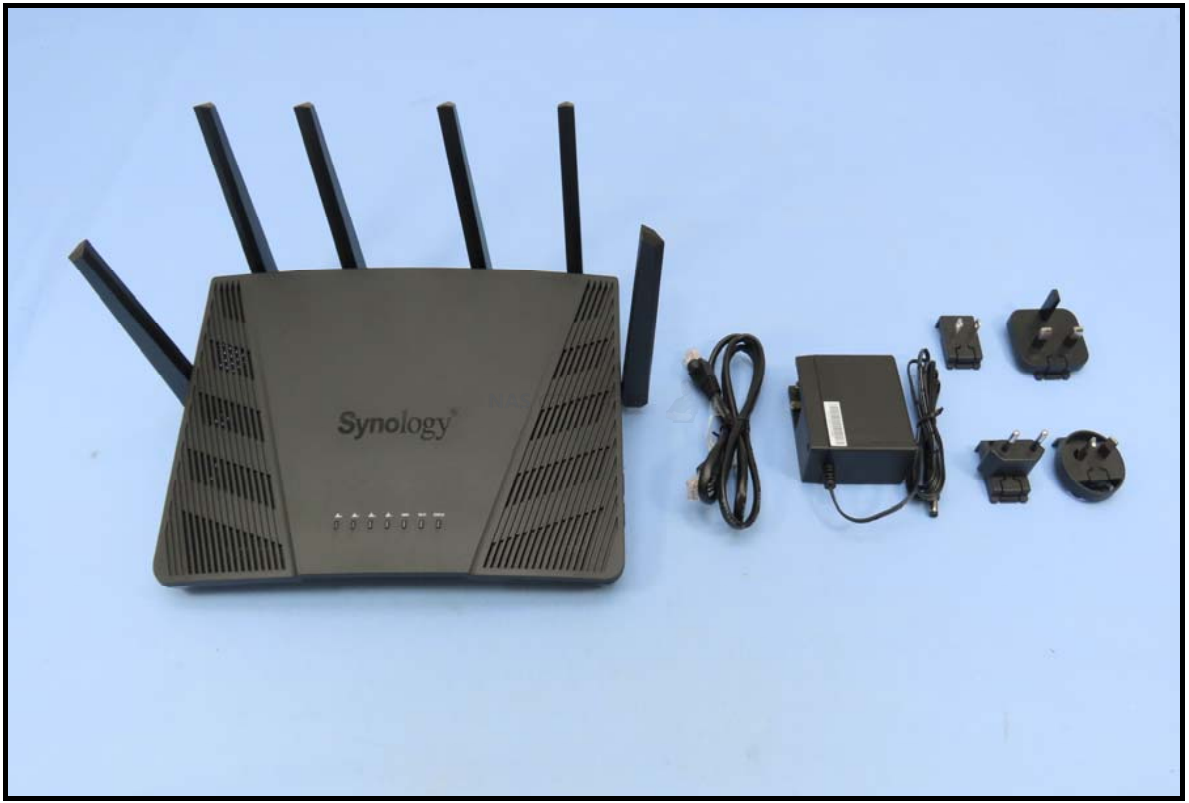
The additional ventilation of the Synology RT6600ax also extends to the front of the system getting a more pronounced grill, though it looks like the SD Card slot that was featured on the Synology RT2600ac is now gone. Unsure how popular this feature was though, so I am not really going to complain about it.
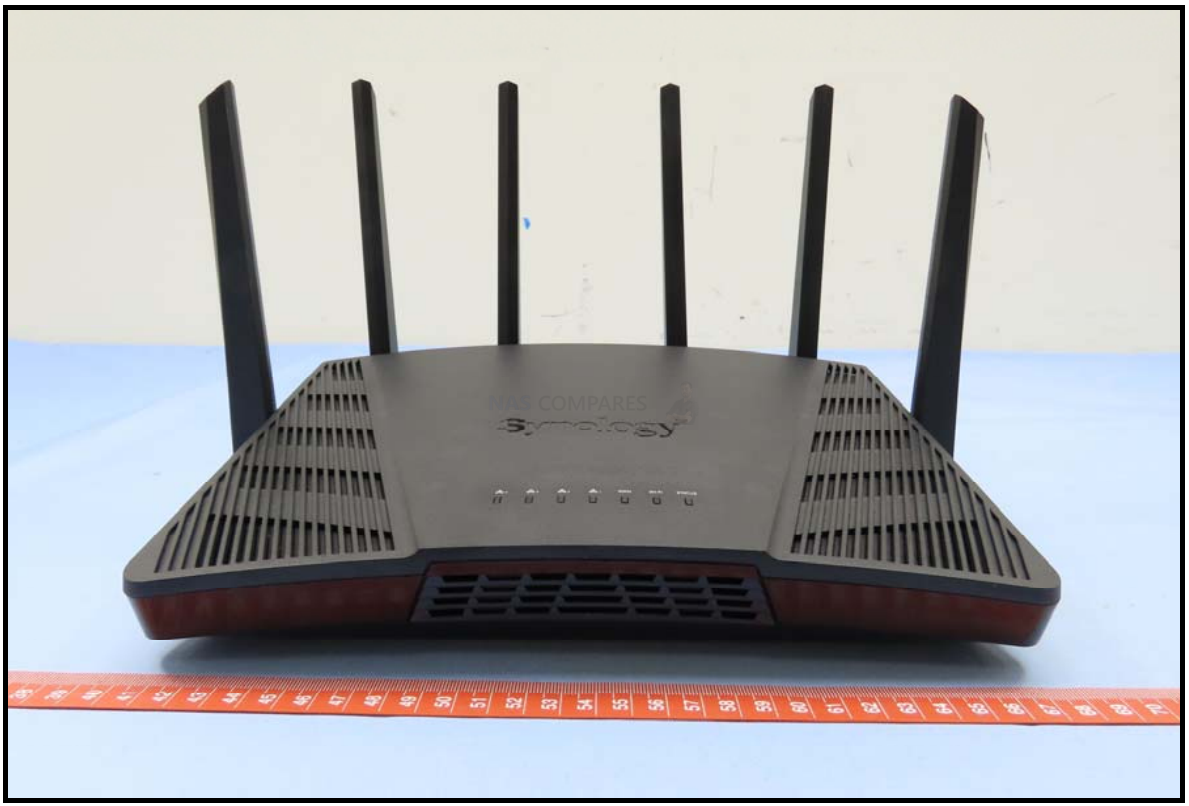
This rear image of the Synology RT6600ax Router shows us the ports that this system will be arriving with, but also the thickness of those six manoeuvrable antennae. These high gain antennae allow 4×4 MIMO and across them allow 2.4Ghz, 5Ghz and 5.9Ghz over the 160Mhz channel (especially interesting to this system) and allow up to a potential 6,660Mb bandwidth shared over devices. Thanks to this and WiFi 6 (802.11ax support), this is a huge jump up from the RT2600ac.
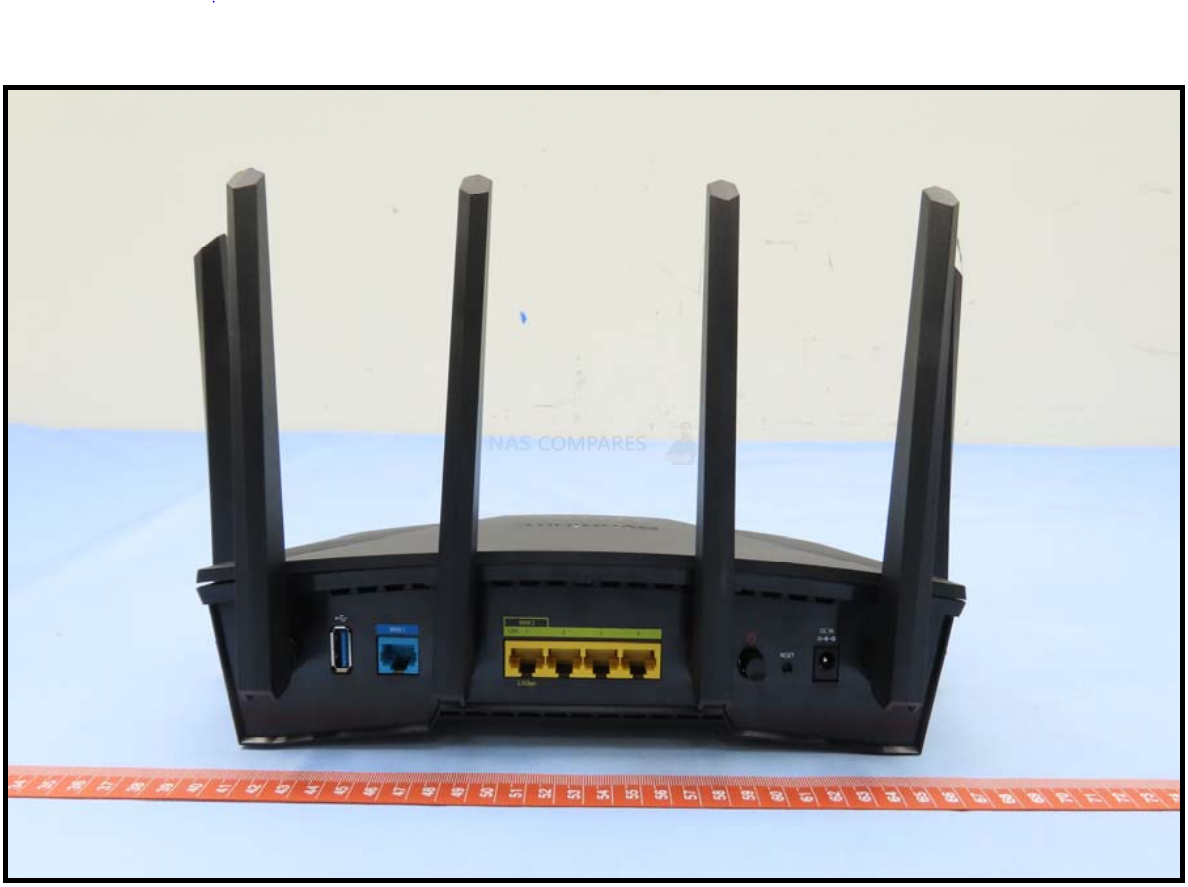
The ports on the RT6600ax system are also largely the same, but with one rather ‘brand-first’ inclusion, namely 2.5GbE connectivity. Although it is worth remembering that the WAN and other LAN ports are 1GbE. So, although the 2.5GbE port is said to be usable for both either a LAN or WAN port (i.e if you internet provider supplies greater than gigabit speeds), you will not be able to then translate this towards an internal network speed greater than 1GbE without using the other 1GbE LAN ports and link aggregation/port-trunking. There is also a USB 3.2 Gen 1 port that allows you to connect a USB drive for shared storage and a number of applications are available in SRM that are comparable to those found in file/folder/media management of DSM.
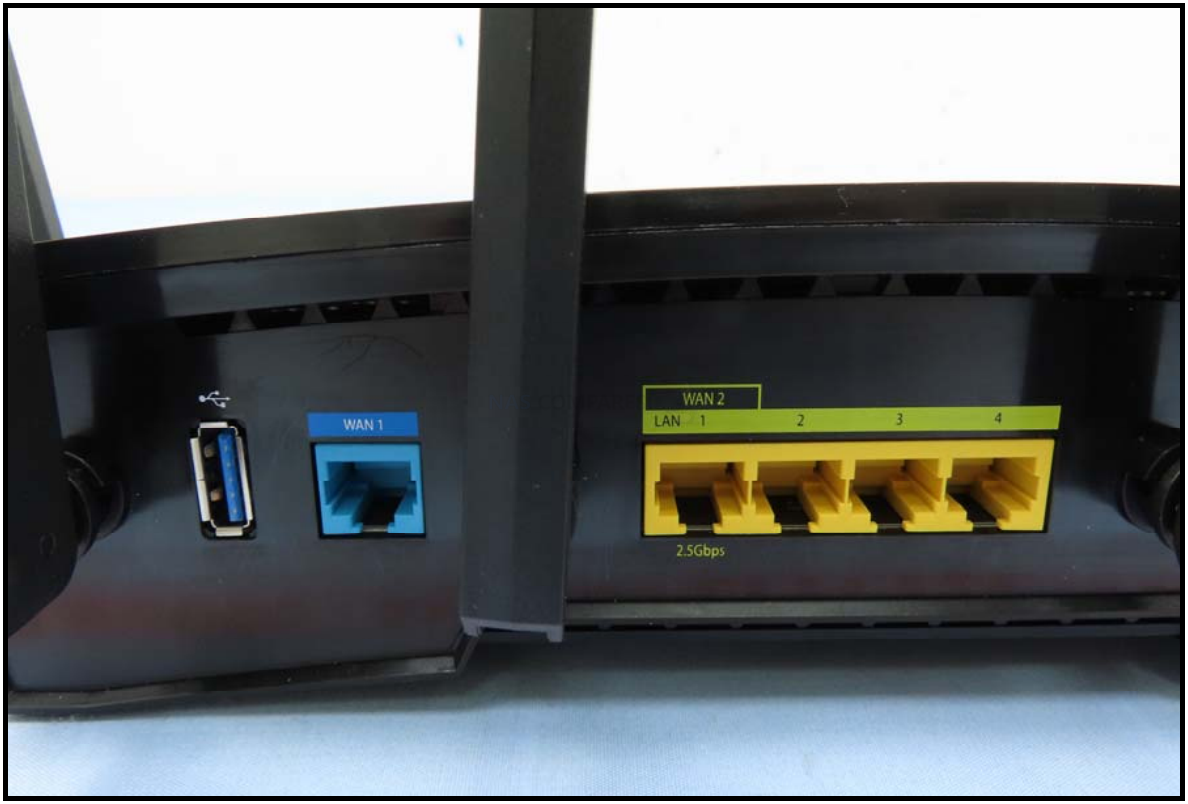
It also looks like the RT6600ax is a degree taller than the RT2600ac before it, but without having them both in front of me, it is hard to say. Still, it does look chunkier and I like that the hardware management buttons are secluded on the side.
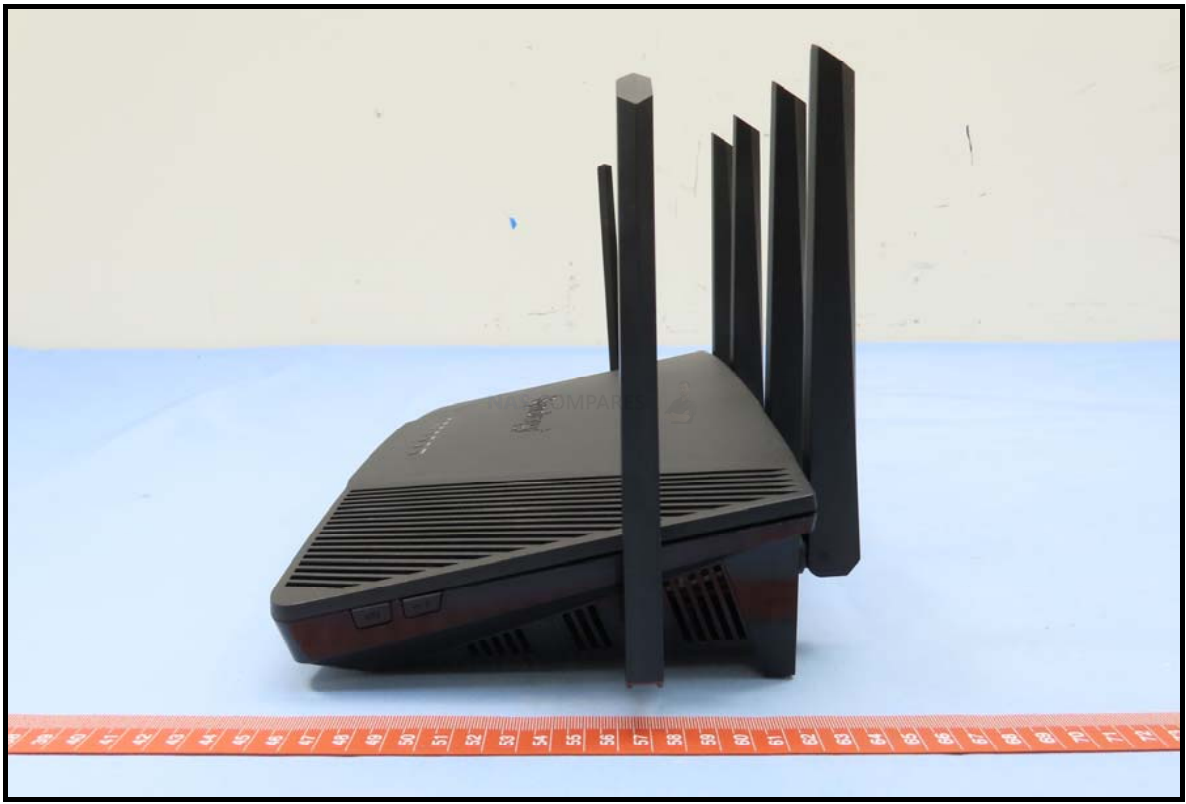
The system also has the option to be wall-mounted and despite it’s apparently chunkier frame, its flattened form does make it look quite sleek.
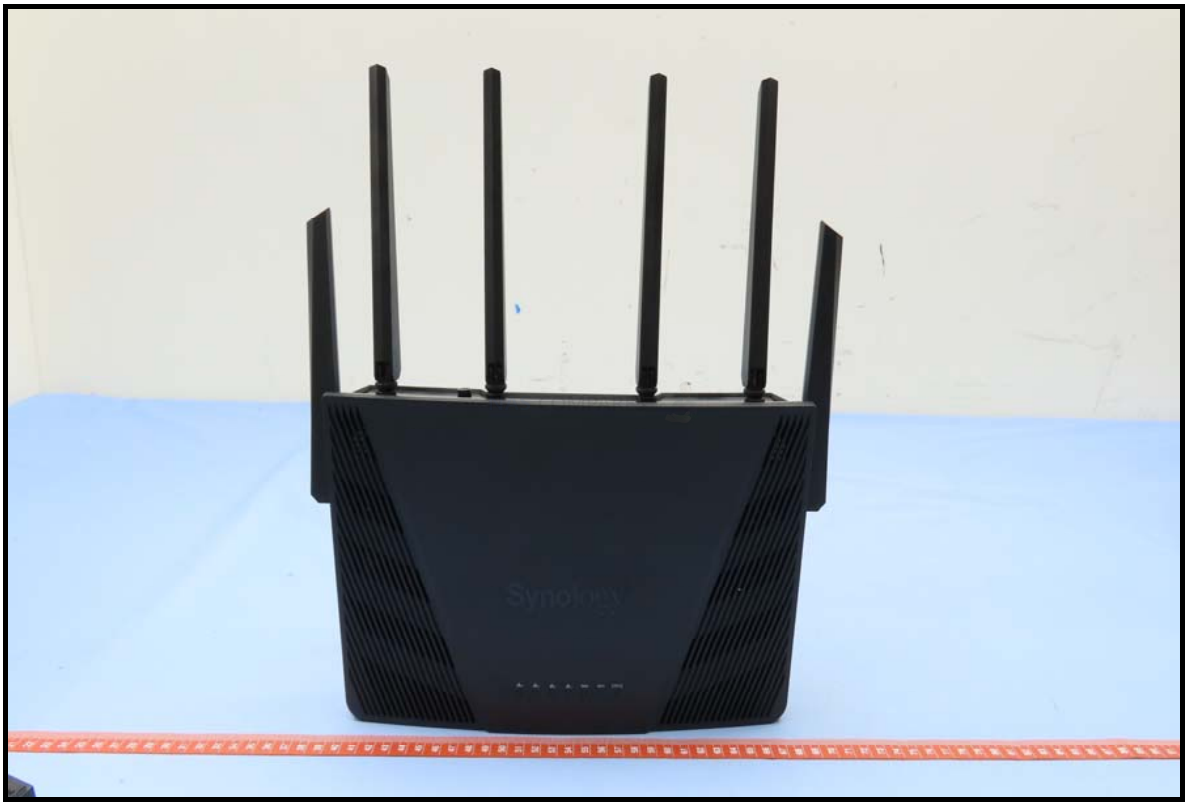
The base of the device has a whole bunch of ventilation (as you might expect), as the system contains no moving parts and (much like most routers) is hugely dependent on internal heatsinks and passive ventilation to maintain high operational efficiency. Add the significant bandwidth potential of the RT6600ax and you are looking at a system that has a lot of processor heat to offload at peak times!
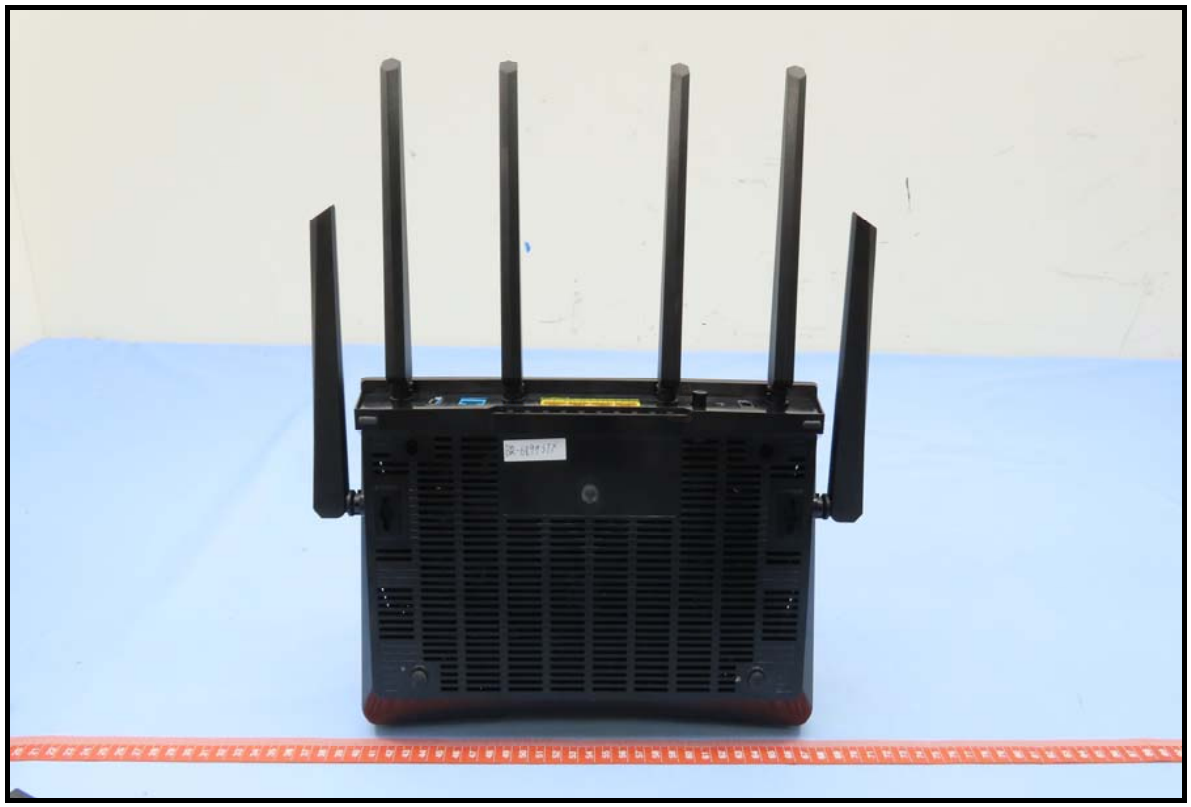
With the internal components removed, we can see that the frame of the system (at a raised angle at the depth of the casing) is quite ‘back’ heavy! Also, interestingly (ok, RELATIVELY interesting) the back of the RT6600ax has a small lip that ensures that regardless of whether the system is wall-mounted or desktop deployed, that it is still raised enough to allow air to be vented at its base.
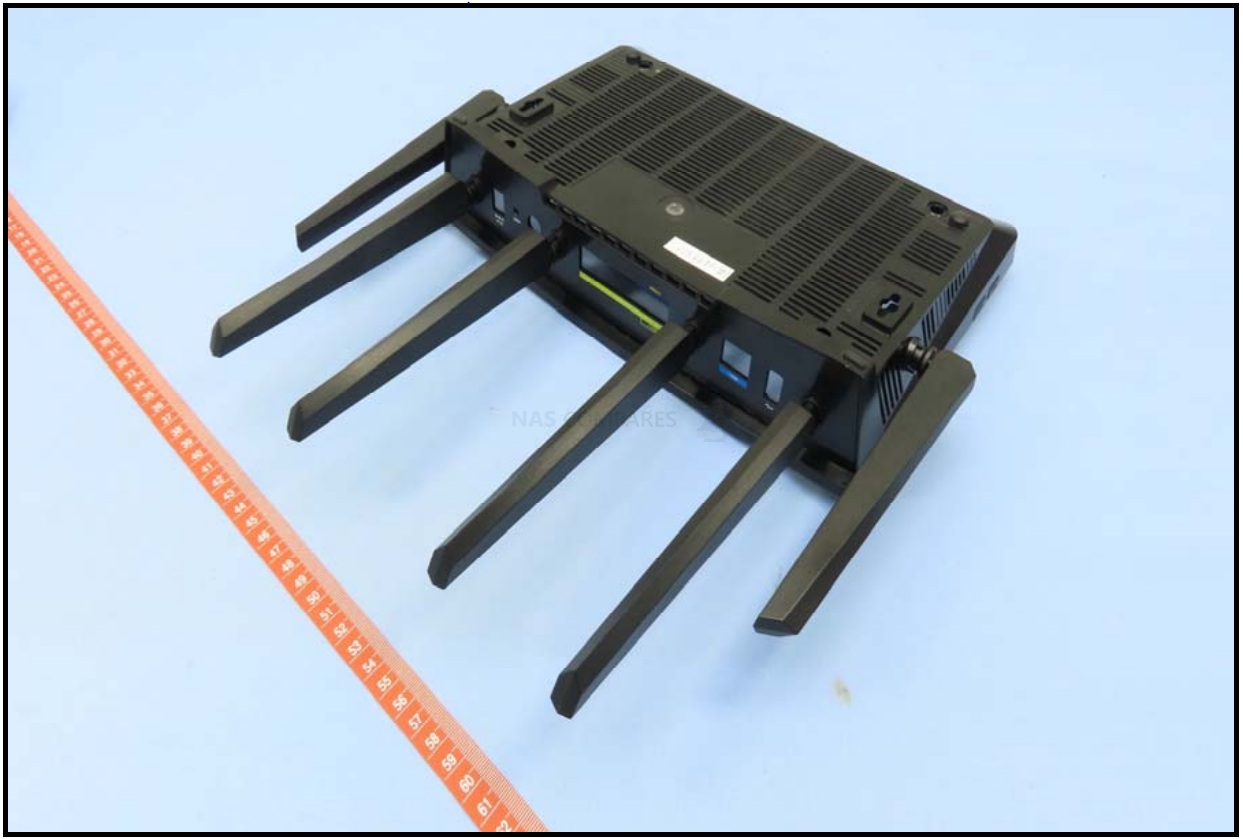
If we see the flip side of the top of the RT6600ax casing, we find the individual antenna cabling that is funneling into the case for placement at each point of the controller board. Take note of the way four of the antenna was directed to one side and the other two are being led to the other side.
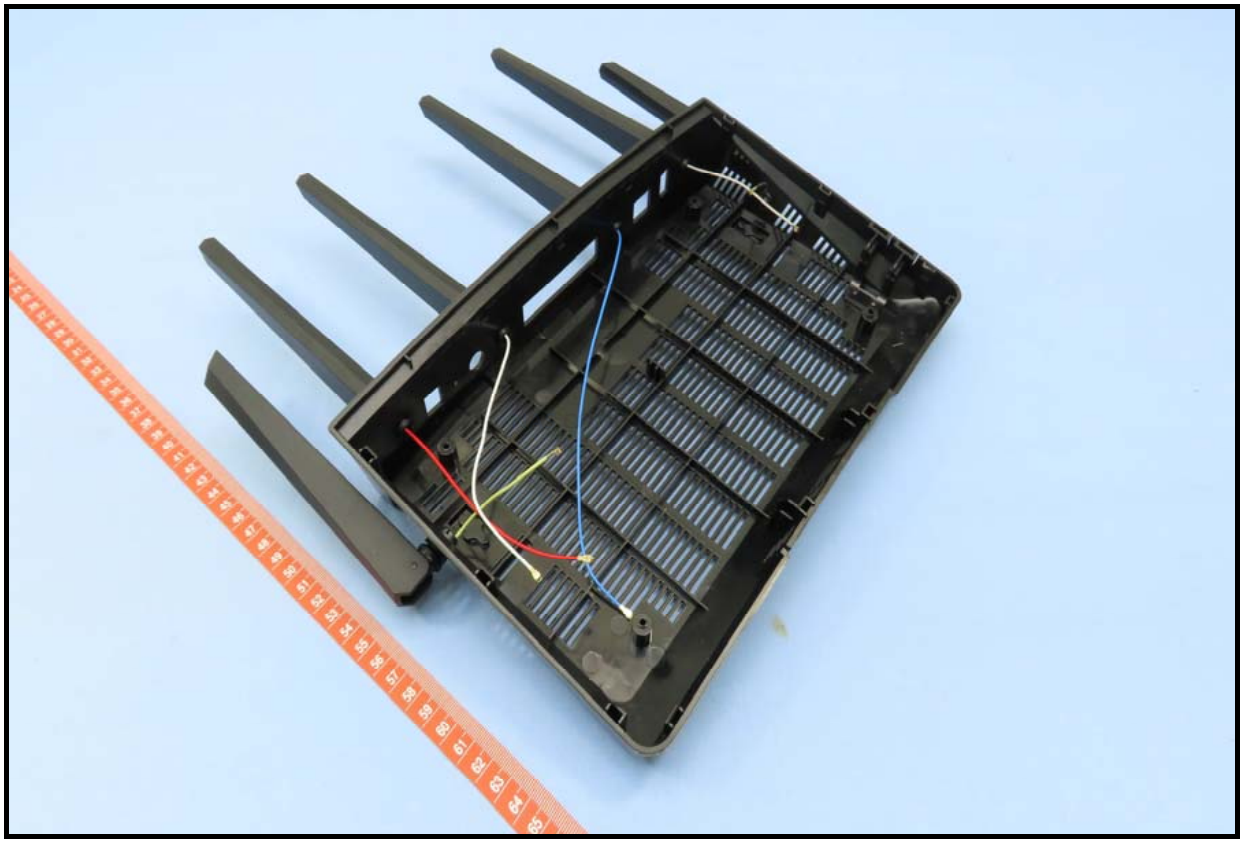
The inside of the RT6600ax comprises of a single main PCB that has all the ports, controllers and more all stored together. Now, the heat dissipation of the Synology RT6600ax router is chiefly combated by this ENORMOUS heatsink. The heatsink panel is at the top of the board (ie directed up, towards the top panel of the system when deployed) and assists in funnelling the heat generated from the components underneath into the ambient air through the vents of the top and front of the casing.
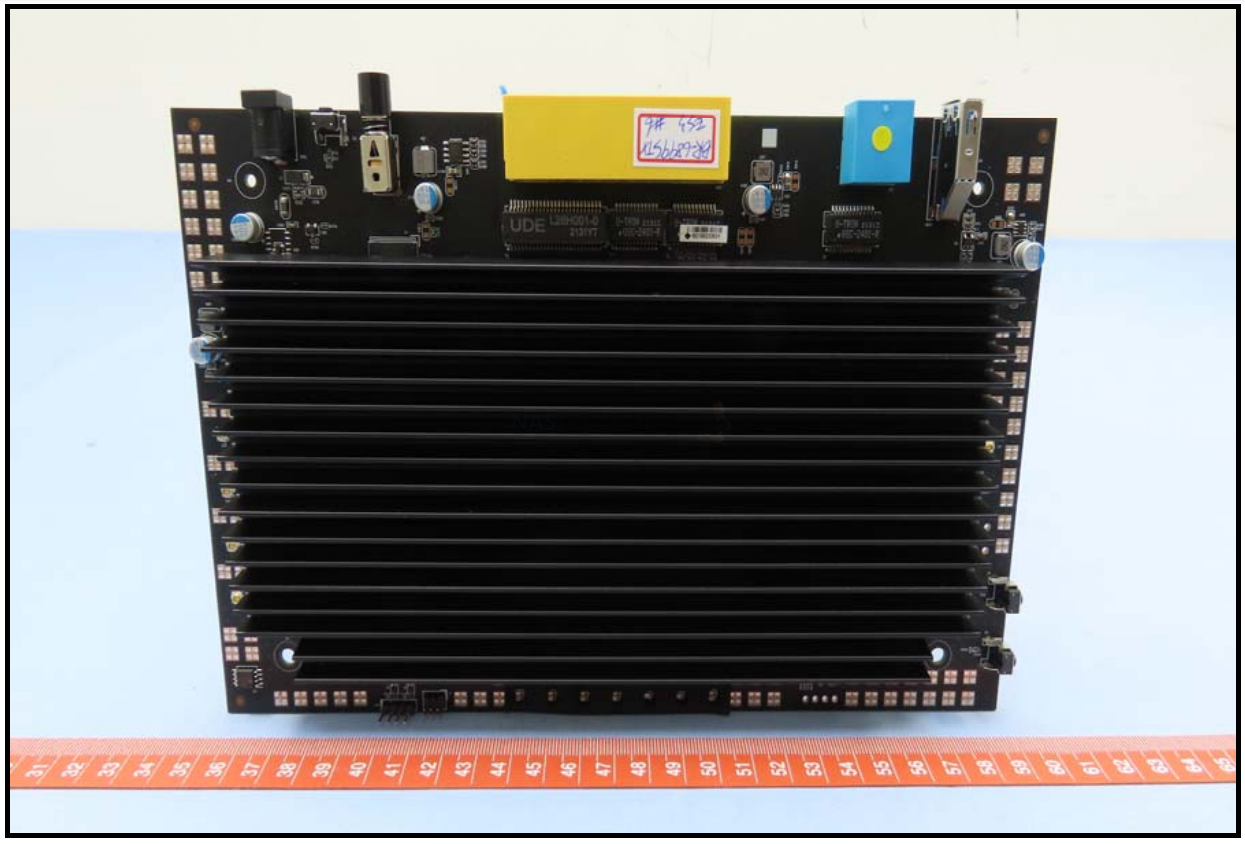
The underside of the PCB/board is quite innocuous, really only featuring installation marks from the core components and the four screws that hole the base of the casing of the RT6600ax casing in place.
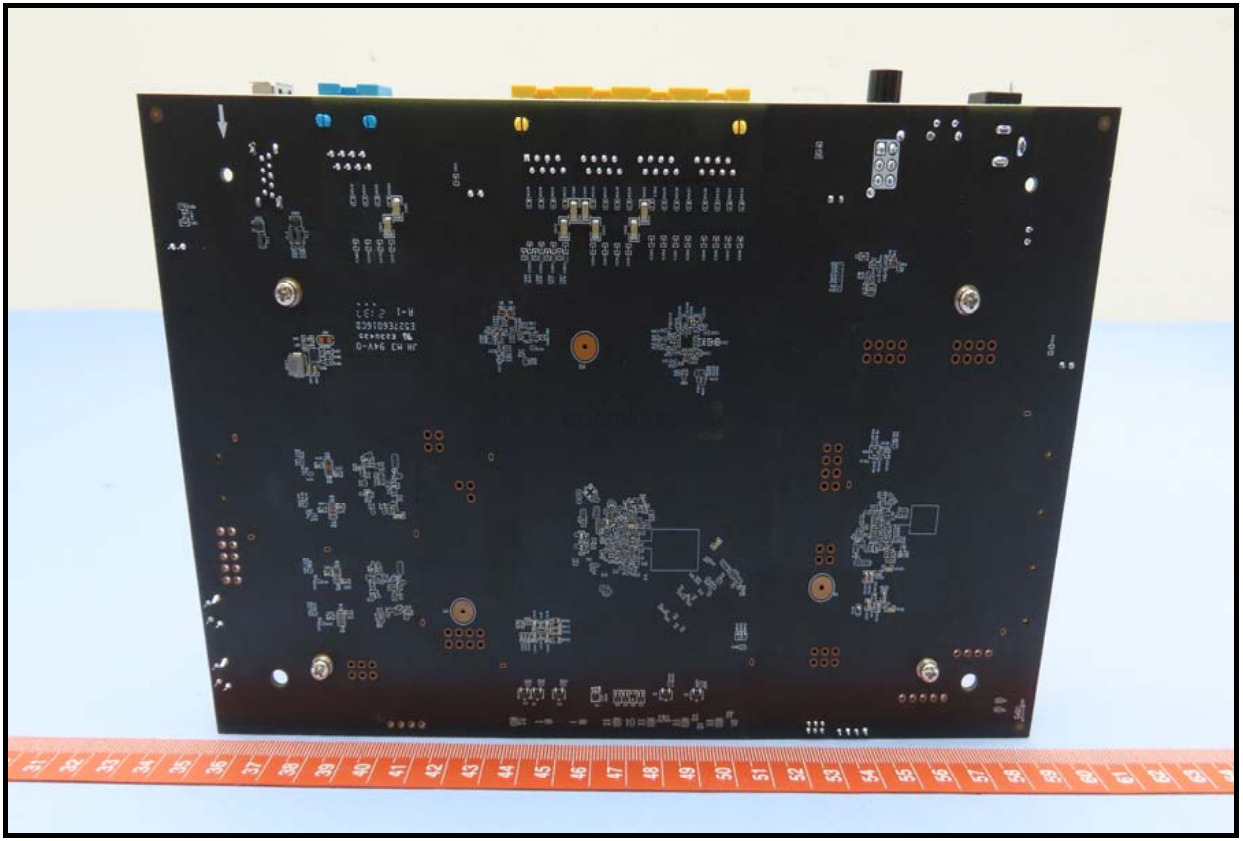
Removing that huge heatsink shows us a remarkably clean and clear board. In the last year I have been looking at SSDs and their heat dissipation methodology and I can say right now, that this is some top-class work here on transferring heat out of these components and into that heatsink as efficiently as possible. The main three components that will be managing the system network traffic and SRM itself are the heaviest covered areas of thermal padding, but also a few smaller components are strategically covered too. Let’s dig a little deeper into these.
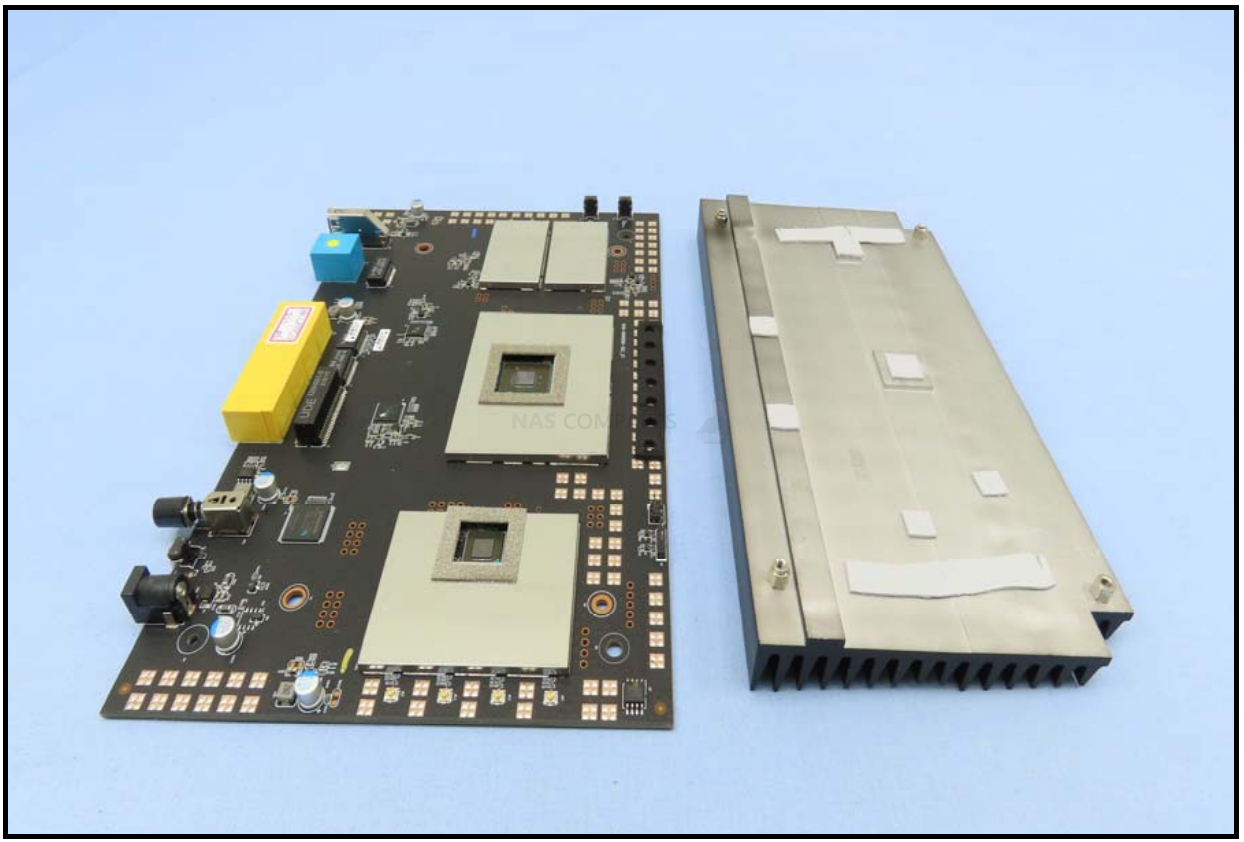
A top-down look at the board shows how the board is clearly divided three of its main components out to allow a huge degree of heat dissipation, but also spaced them away from the other transistor modules (and that 4GB eMMC) significantly across the whole PCB of the RT6600ax
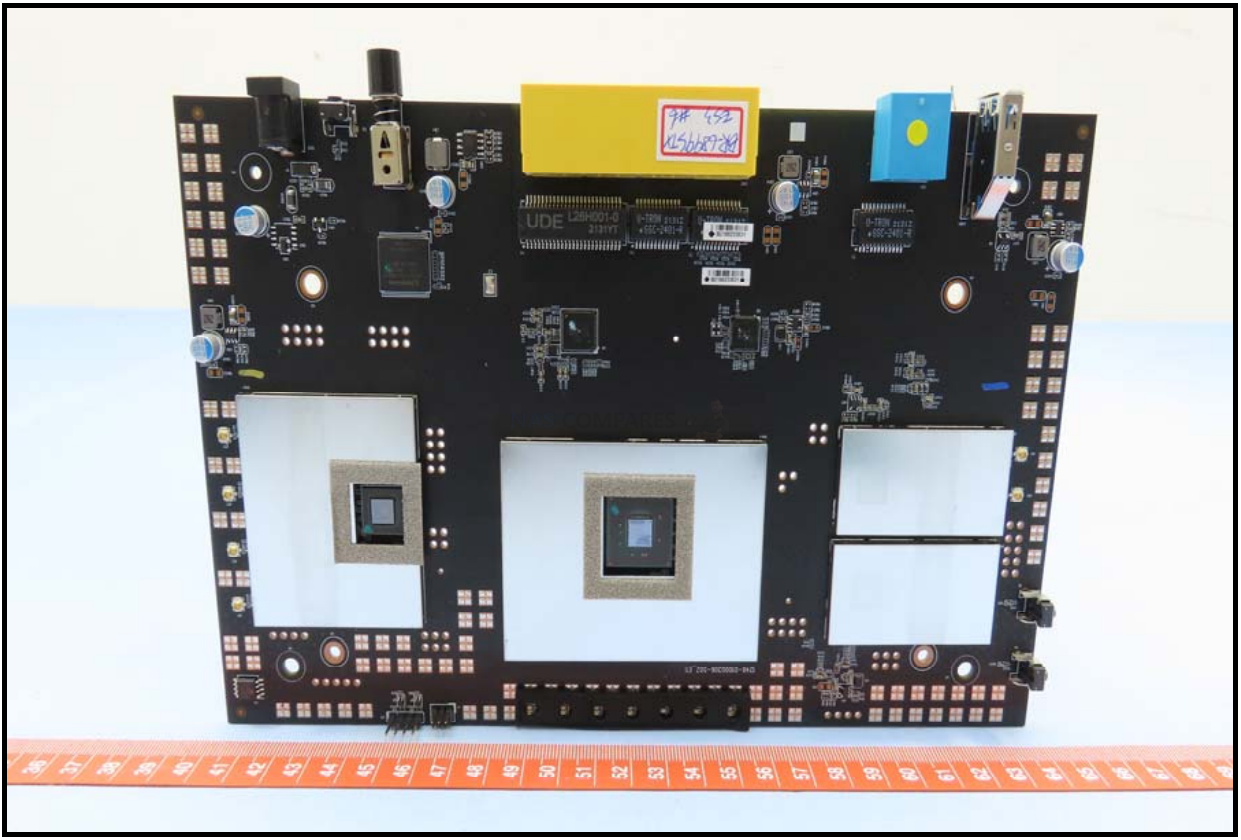
By removing the thermal padding, we can get a clearer look at the key components of the Synology RT6600ax Router. Each very clearly defined block has its own unique components, though it is worth adding a disclaimer that the images here are a little blurry, so apologies in advance for any errors regarding component identification.
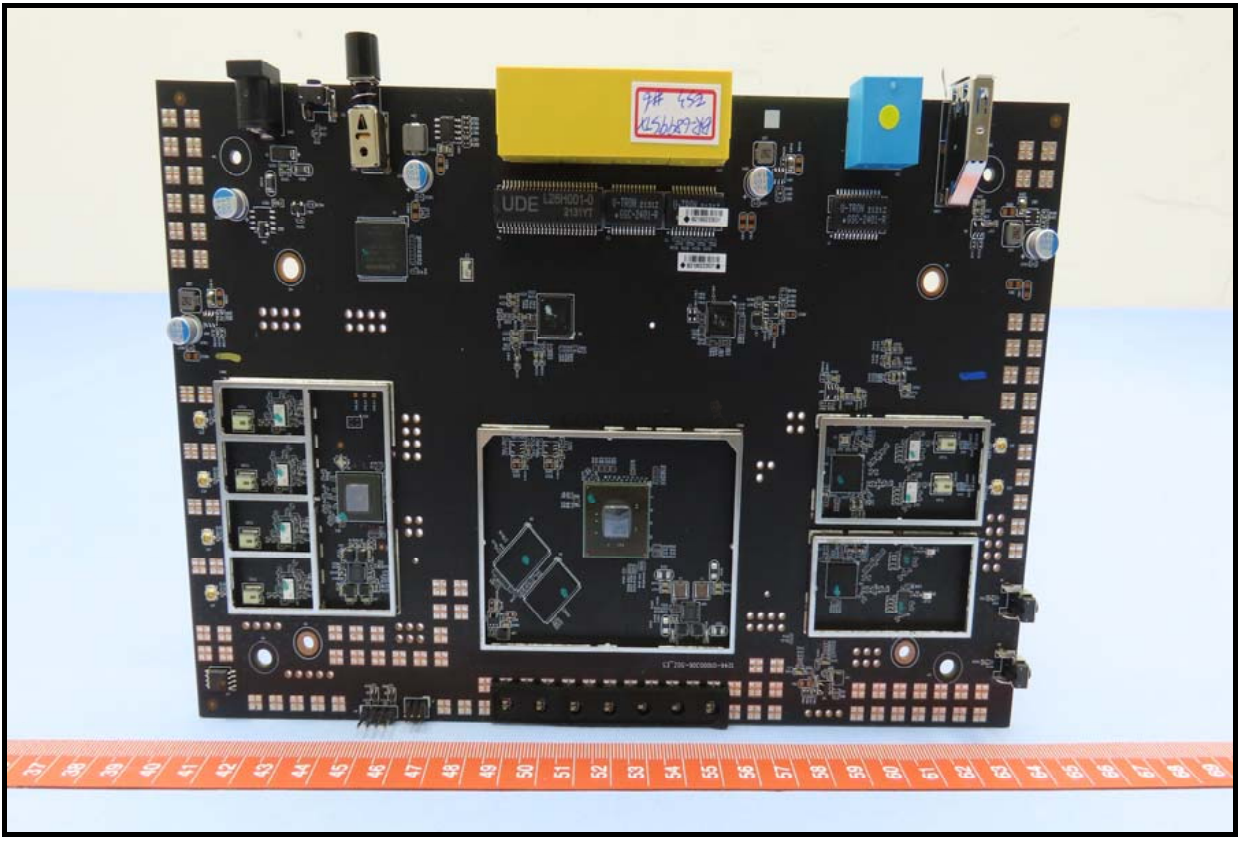
In the first block, where four of the antennae were connected, we find a Qualcomm QCN-9024 / QCN9024 WiFi6 MU-MIMO 4×4 network controller, that is reported to feature a 5.15GHz – 5.95GHz frequency, OFDMA: BPSK, QPSK, DBPSK, DQPSK, 16-QAM, 64-QAM, 256-QAM, 1024-QAM, 4096-QAM modulation and it supports 20/40/80/160MHz at 5GHz.
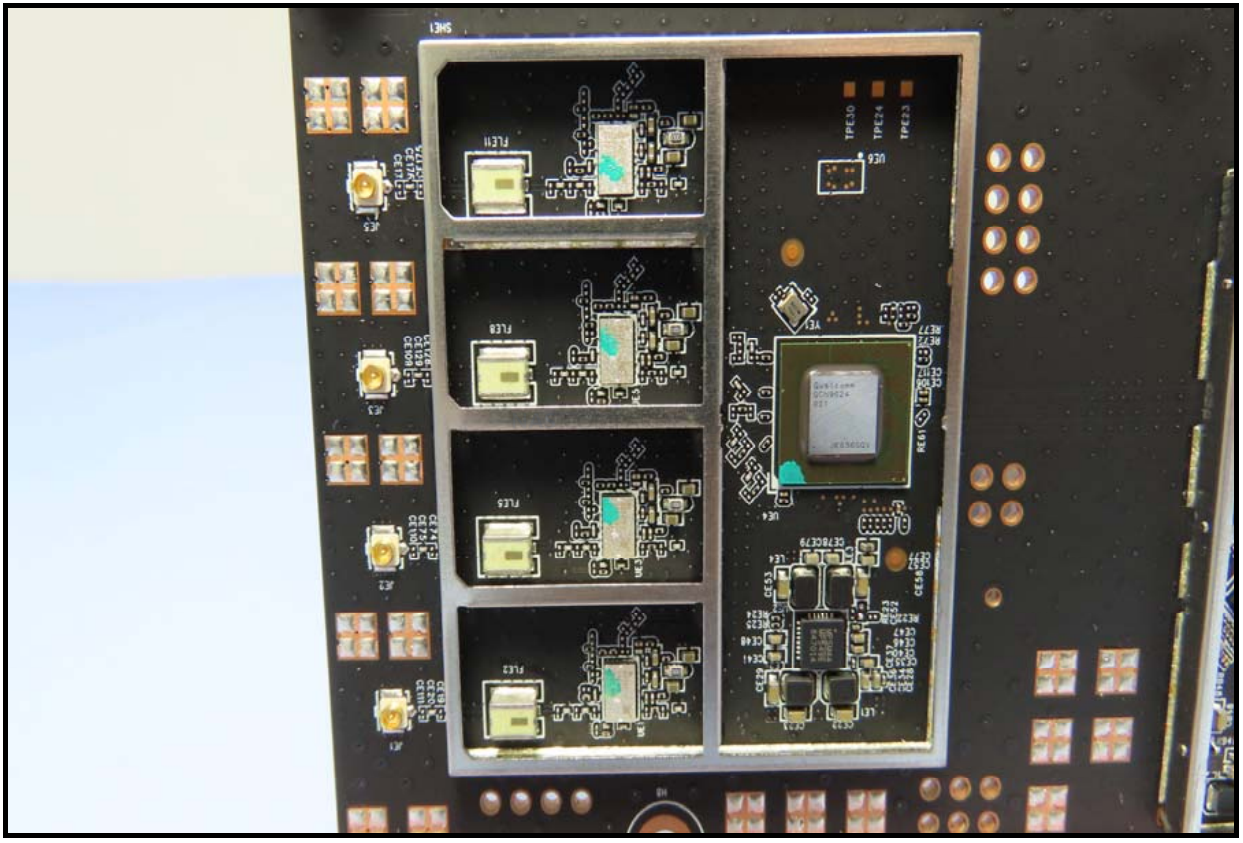
In the middle of the board, we find the brains of the outfit! The Synology RT6600ax Router runs on a Qualcomm Atheros IPQ6018 Quad-core ARM 64-bit A53, at 1.8 GHz. This processor (yes, I googled) is part of the Qualcomm Networking Pro 400 family and is a highly flexible but power-efficient Wi-Fi 6 (802.11ax) network solution, supporting 4 spatial streams of Wi-Fi 6 connectivity. The Qualcomm Networking Pro series supports next-generation Wi-Fi 6 features like optimized multi-user scheduling of both uplink and downlink MU-MIMO and OFDMA across all spatial streams. It also supports 1024QAM, BSS colouring, and WPA3 security, all delivered on an architecture designed to successfully associate and maintain connectivity for hundreds of client devices simultaneously. This processor also arrives with two visible blocks of memory which, although not hugely clear in the images, based on the cortex architecture of the processor are likely 2x 512GB or 2x 1GB of DDR3L memory – That one is still very TBC.
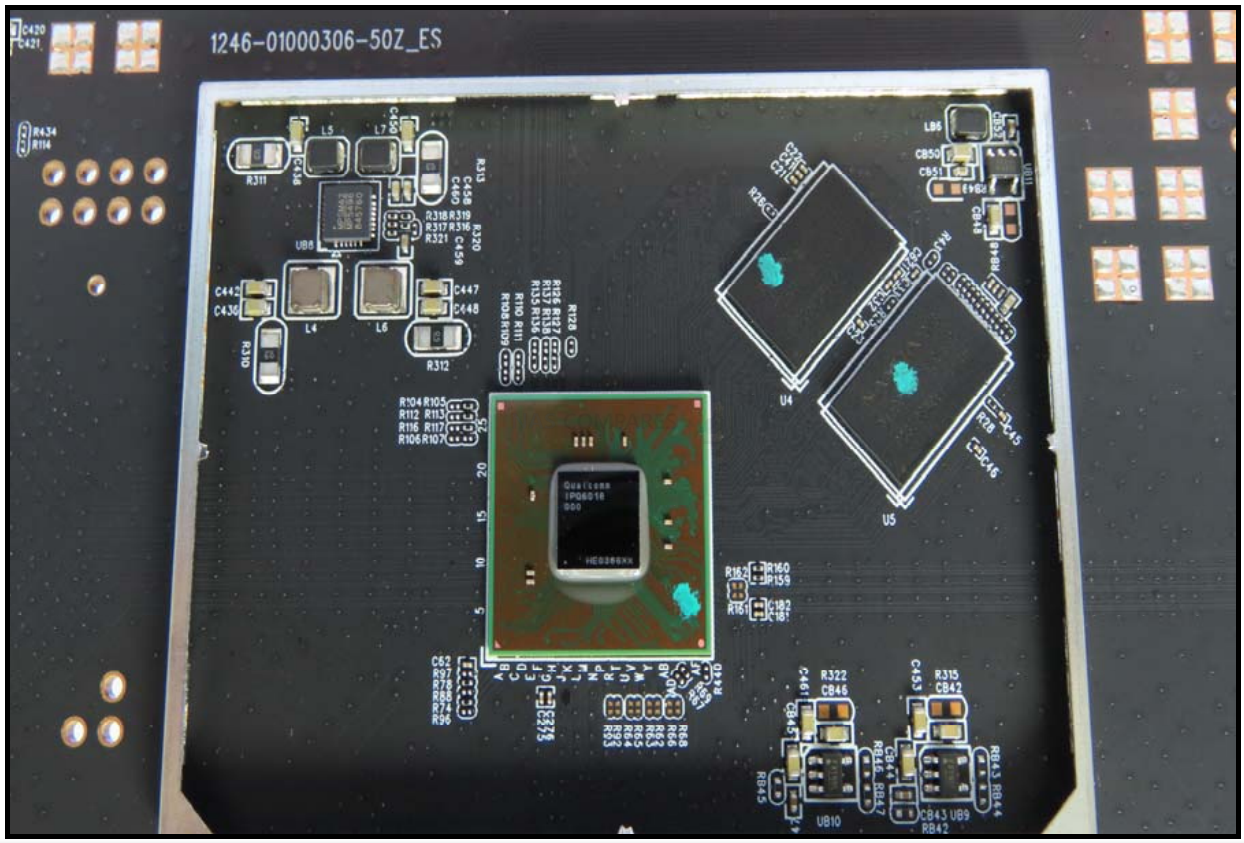
The third and final clearly separated block is where the other two antennas are connected into. Again, the details on these are a little unknown at the moment, with one block having the two antenna connectors and an additional Qualcomm processor and a further block below it that is not too clear. and I will revisit this area of the article as soon as I know more (or if/when someone can detail it in the comments!).
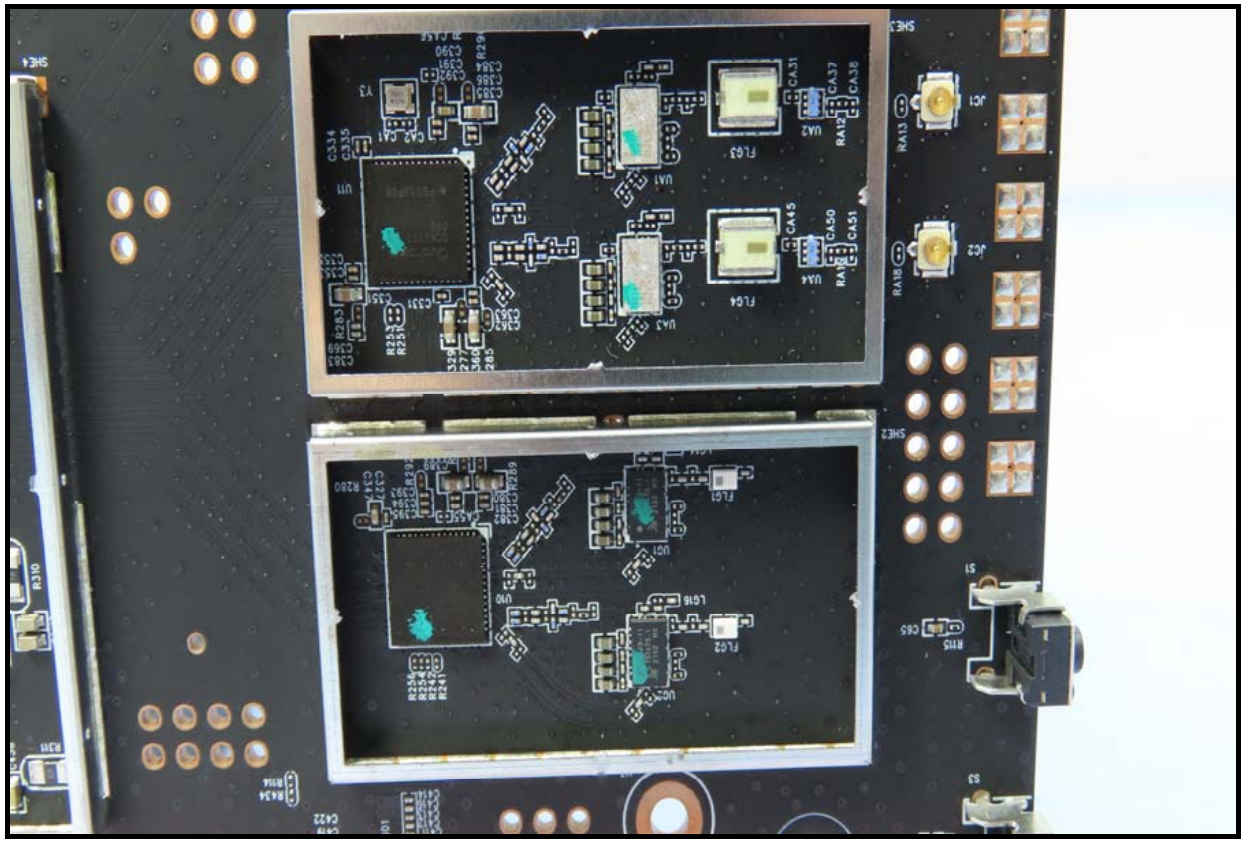
Finally, we have a single block/module of Kingston 4GB eMMC MLC flash (EMMC04G-M627). This is where the Synology Router Manager software and the changes you make/apply to the system will be applied and stored. Unlike Synology’s traditional NAS systems, the RT6600ax does not feature any internal SATA bays that you can easily populate with HDD/SSD storage media (though USB storage additions are possible). This is fairly common practice among intelligent/smart routers and in the case of Synology including their rather premium router management software (which receives regular updates and has a number of additional option add on features), I can imagine a decent chunk of that 4 gigabytes being used quickly.
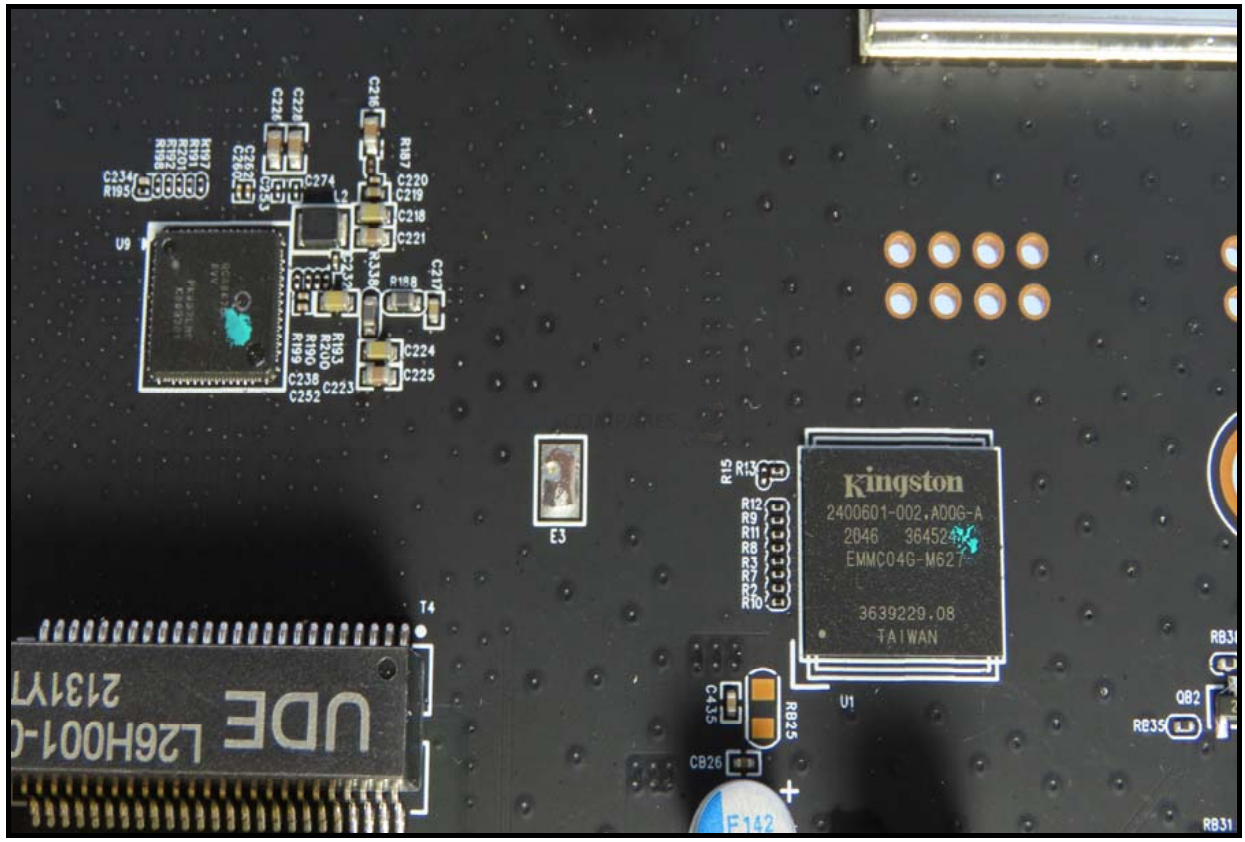
And that’s really it. There are additional images available from when the system was tested at length to pass certification, but we are definitely getting indications that the release of the Synology RT6600ax grows ever nearer and with promised releases in other areas of the brand’s portfolio slated for Q1/Q2 of 2022, I do think this system will likely see release towards the end of April ’22. Stay tuned for more updates and an eventual review of the Synology RT6600ax WiFi 6 router here on NASCompares soon.
📧 SUBSCRIBE TO OUR NEWSLETTER 🔔
🔒 Join Inner Circle
Get an alert every time something gets added to this specific article!
This description contains links to Amazon. These links will take you to some of the products mentioned in today's content. As an Amazon Associate, I earn from qualifying purchases. Visit the NASCompares Deal Finder to find the best place to buy this device in your region, based on Service, Support and Reputation - Just Search for your NAS Drive in the Box Below
Need Advice on Data Storage from an Expert?
Finally, for free advice about your setup, just leave a message in the comments below here at NASCompares.com and we will get back to you. Need Help?
Where possible (and where appropriate) please provide as much information about your requirements, as then I can arrange the best answer and solution to your needs. Do not worry about your e-mail address being required, it will NOT be used in a mailing list and will NOT be used in any way other than to respond to your enquiry.
Need Help?
Where possible (and where appropriate) please provide as much information about your requirements, as then I can arrange the best answer and solution to your needs. Do not worry about your e-mail address being required, it will NOT be used in a mailing list and will NOT be used in any way other than to respond to your enquiry.

|
 |
| Where to Buy a Product | |||
|
|
    
|

|
VISIT RETAILER ➤ |
 |
    
|

|
VISIT RETAILER ➤ |
 |
    
|

|
VISIT RETAILER ➤ |
 |
    
|

|
VISIT RETAILER ➤ |
We use affiliate links on the blog allowing NAScompares information and advice service to be free of charge to you. Anything you purchase on the day you click on our links will generate a small commission which is used to run the website. Here is a link for Amazon and B&H. You can also get me a ☕ Ko-fi or old school Paypal. Thanks! To find out more about how to support this advice service check HERE If you need to fix or configure a NAS, check Fiver Have you thought about helping others with your knowledge? Find Instructions Here
ZimaOS is the BEST Beginner NAS OS - Watch Your Back UnRAID and TrueNAS !!!
30TB Hard Drives are TOO BIG ! (and here is why)
COMPLETE UGREEN NAS Setup Guide - 2025 EVERYTHING VERSION
$110 USB4 to 2x10Gb Adapter Review - What the WHAT?
UGREEN NAS Now has iSCSI, 2FA and Jellyfin (and more) - FINALLY!
Seagate 30TB Ironwolf and EXOS Hard Drive Review
Access content via Patreon or KO-FI






DISCUSS with others your opinion about this subject.
ASK questions to NAS community
SHARE more details what you have found on this subject
CONTRIBUTE with your own article or review. Click HERE
IMPROVE this niche ecosystem, let us know what to change/fix on this site
EARN KO-FI Share your knowledge with others and get paid for it! Click HERE